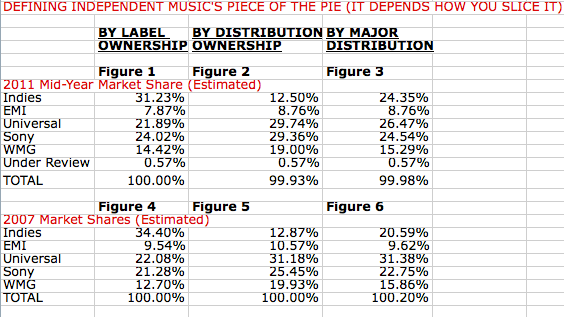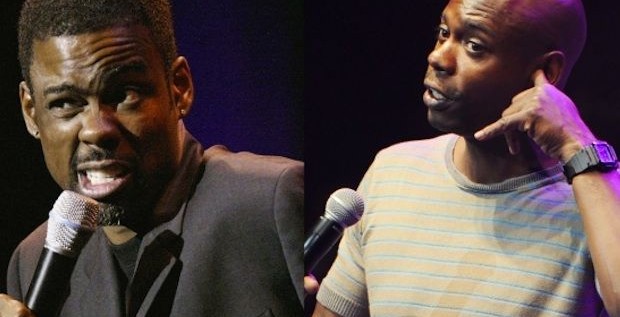What Exactly Is An Independent Label? Differing Definitions, Different Market Shares

 Back in 2007 (June 30, Billboard) when I asked what is an indie, I got a multitude of answers. Today, that question evokes even more complex answers because the landscape has not only changed dramatically but is still changing.
Back in 2007 (June 30, Billboard) when I asked what is an indie, I got a multitude of answers. Today, that question evokes even more complex answers because the landscape has not only changed dramatically but is still changing.
Over the last 15 years, things have only gotten even murkier. Majors used to just buy indies; nowadays, they also invest in indies; and they even do joint ventures with indies-sometimes on an album-by-album basis. Going the other way, majors like RCA have also put artists like Ray LaMontagne through RED. In fact, there are so many permutations of indie/major collaborations and secret deals concerning those permutations that it’s sometimes hard to tell what’s still indie and what’s a major.
Even before things became as complex as they are now, SoundScan itself counted market share in two different ways. It has a label market share report, which used to tally market share by label and then add them up under each major distributor. It also had an album summary report, which in essence tracked market share by corporate ownership of distribution companies. (See figures 2 and 5 above).
Once upon a time, it was easy to calculate indie market share by distributor in Nielsen SoundScan. All you had to do was look at distributor market share by corporate ownership in the marketing summary reports and subtract out RED, Alternative Distribution Alliance and Caroline, respectively from Sony Music Entertainment, the Warner Music Group and EMI; and add their share in with the “other.” i.e., indie, category in SoundScan to come up with a good representation of indie market share. (See figures 3 and 6).
But that all began to change when the Universal Music Group started Fontana in 2004. From the get go, however, UMG, didn’t allow SoundScan to show that company’s market share; and instead had that share buried within UMG’s share. In other perhaps related moves, since Fontana’s market share was buried within UMG, the market share of RED and Caroline have been shifted, respectively by Sony and EMI from the summary report to the label album reports.
Other things have changed too, in this complex music industry. For example, Caroline evolved into EMI Label Services/Caroline that uses the EMI sales distribution ARM arm; ADA and WEA have one share sales team; Sony has acquired IODA, the independent digital aggregator; Universal has invested in InGrooves and its market share is included somewhere in UMGs.
But even before all those changes happened, without having the ability to know what Fontana’s market share was, Billboard made an editorial decision to keep an apple-to-apple comparison when tracking market share. The only way to do that was to use summary report market share totals, which meant that all the major-owned indie distributors would be counted under the majors. Unfortunately, that decision resulted in the smallest possible definition of independent market share (see figures 2 and 5) becoming the predominant one used, not only in Billboard, but often in the mainstream media, much to the chagrin of indie players.
With the dawning of the digital age, indie label and distributors often find themselves relegated to second-class citizen status as digital servers providers usually start out by giving preferential trading terms to the majors, but not the indies.
So when Google was putting together its cloud offering, sources say it started out by offering indie labels five percentage points less than the 58% split it offered the major labels. Moreover, while some services offered the majors big advances, indies are left out in the cold on the front-end.
Consequently, in the U.S. A2IM has been leading the charge to have indie market share redefined so that the ownership is also counted. In their definition (See figures 1 and 4), not only are the labels distributed by ADA, RED, Fontana, IODA (now owned by Sony) counted in indie market share but so are independently owned labels like Razor & Tie and Wind-up, both distributed by Sony; and labels like Hollywood, Concord and Big Machine, all distributed by Universal. In fact, A2IM claims that any label that is at least 50% owned by the indie partner, no matter who distributes it, is an indie and should be counted accordingly.
This isn’t a definitive market share either, since again there are many secret deals between indies and majors whereby it’s hard to determine which entity actually owns the master. But this Billboard estimate was calculated using A2IM’S guidance on which labels are independently owned and using raw SoundScan data.
One last note, these market share pies aren’t exactly an apple to apple comparison since the 2007 market share pies are based on album market share and the 2011 pie’s are based on album market share plus track-equivalent market share whereby 10 digital downloads count as one album. So while comparing market share in Figure 1 and 4, it looks like the indie’s slice of the pie is down the lower number now is due to the indie’s having lower market share for track-equivalent albums. If only albums were counted at mid-year 2011,indie album market share is actually 33% and absent from that market share is the shares of RoadRunner and Univision, which were counted as indies back in 2007, before they were bought by, respectively, WMG and UMG.




![Kanye West (@KanyeWest) – New Slaves [CDQ] (Kind Of)](http://iamnotarapperispit.com/wp-content/uploads/2013/06/Kanye-West_Snipe_Final-450x675-450x317.jpg)
IAmNotARapper: RT RT: What Exactly Is An Independent Label? Differing Definitions, Different Market Shares http://t.co/9Jpd5Cdy
#IAmNotARapper RT What Exactly Is An Independent Label? Differing Definitions, Different Market Shares http://bit.ly/mVH56A
What Exactly Is An Independent Label? Differing Definitions, Different Market Shares http://bit.ly/mVH56A
#IAmNotARapper RT What Exactly Is An Independent Label? Differing Definitions, Different Market Shares http://bit.ly/mVH56A
#IAmNotARapper RT What Exactly Is An Independent Label? Differing Definitions, Different Market Shares http://bit.ly/mVH56A
#IAmNotARapper RT RT What Exactly Is An Independent Label? Differing Definitions, Different Market Shares http://bit.ly/mVH56A
What Exactly Is An Independent Label? Differing Definitions, Different Market Shares – http://tinyurl.com/3wkusfl